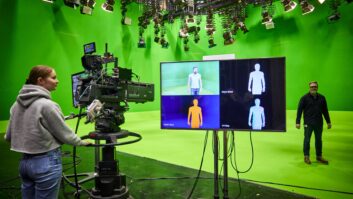A new report looking at the growing popularity of virtual production in the TV and film industry has found that the use of virtual production continues to grow, with 40 per cent of respondents stating they are using the technology on current projects and half saying they are likely to do so in the next 18 to 24 months.
Altman Solon’s 2022 Global Film & Video Production Report surveyed 132 industry executives, each with over three years of virtual production experience.
It found that the move to virtual production is being driven by a need to lower production costs, improve timelines, and overcome the limitations of physical production sets.
The most popular virtual production application among respondents was motion capture, with half using it over the past 12 months. Cloud-based editing is also popular with executives, with 48 per cent saying they are using it because of ease of accessibility and storage.
Other key findings include:
- The growing number of virtual production stages in the US and UK, which have 84 and 40 stages, respectively, shows that content creators and studios are investing in VP. There are other VP stages globally, including Dark Bay, Netflix’s first purpose-built VP stage in Germany, while Sony’s recent acquisition of Pixomondo highlights the global interest and reach to support virtual production in the top filming locations.
- VP tools enable more collection of data versus traditional production methods. However, data usage has been underused to this point: 62 per cent of respondents cite a “lack of business intelligence strategy.” In comparison, 49 per cent state a “lack of business intelligence impact,” and 45 per cent find a “lack of training and execution” as their top limitations to collecting data.
“Virtual production grew out of necessity during the Covid-19 shutdowns but is quickly becoming an industry standard,” said Altman Solon partner Mary Ann Halford. “It includes an array of effective tools that keep projects on track and allow for creative collaboration across sites and even continents. Studios are increasingly exploring its efficacy given the prospective cost savings as well as reduced travel.”
More information about the survey and its findings is available online.







